Columns
Cricket After Hughes: The Bouncer Is A Fast Bowler’s Fundamental Right
Sandipan Deb
Nov 29, 2014, 02:32 PM | Updated Feb 12, 2016, 05:17 PM IST
Save & read from anywhere!
Bookmark stories for easy access on any device or the Swarajya app.
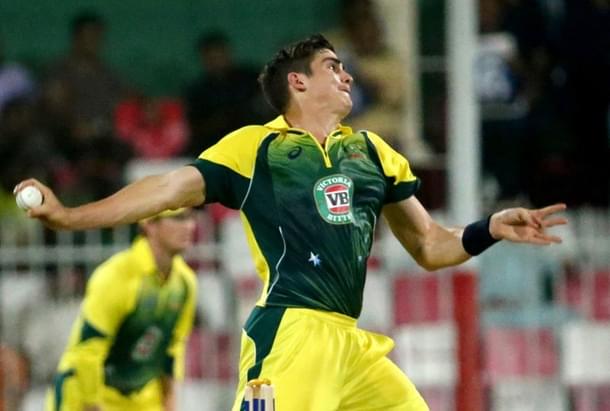
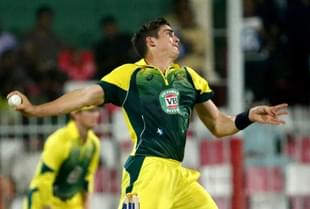
Phil Hughes’ death is a terrible tragedy, but banning the bouncer, as many are suggesting, will be unjust and irrational, and can only diminish the beauty of cricket.
The death of cricketer Phil Hughes after being struck on the back of his head by a bouncer in a Sheffield Shield match is heart-breaking. Hughes (the scorecard will forever, poignantly, read 63 not out) would have surely been in the Australia team in the upcoming series against India. He was three days short of his 26th birthday.
A tragedy like this—a life so full of promise cut short even before it reached its prime—is almost disorienting in its sheer meaninglessness. It just seems plain unfair.
However, what is also unfair, is the flurry of suggestions coming from all quarters (except, as far I know, for men who play and have played cricket at the highest level) about bringing in more restrictions on fast bowlers. Enough damage has been done to the game already by tilting the rules in favour of batsmen, and (especially in the sub-continent) carefully preparing dead pitches that offer the fast bowler no purchase. We certainly don’t need to load the dice any further.
Op-ed writers have asked for the bouncer to be outlawed immediately. Any delivery that rises above the batsman’s shoulder should be called a no-ball, and if a bowler bowls a certain number of such no-balls, he must be taken off the attack. On Facebook, at least one senior journalist has gone an extra 22 yards and demanded that all deliveries above 130 km should be no-balled!
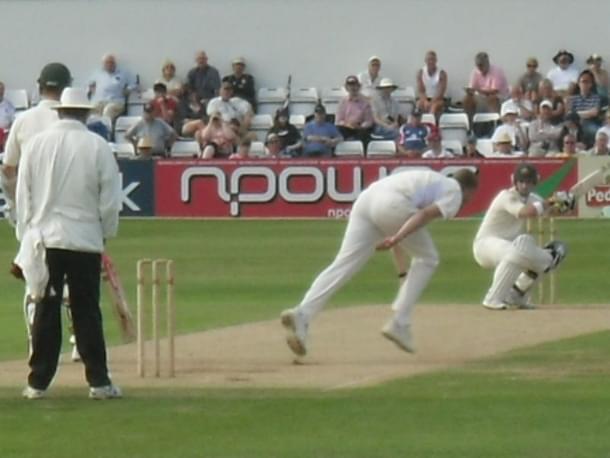
Other ideas being floated include enforcing shorter run-ups for fast bowlers, soft pitches, even four-ball overs (This will rotate the strike quicker, because a fatigued batsman is more likely to be hit by a bouncer. What these innovative thinkers do not realize is that the bowler will also be less fatigued!).
Of all the various brainwaves, the 130-km demand is the most unreasonable and bizarre. It reminds me of a Kurt Vonnegut story about a society of the future where all men and women who are found to be more intelligent than the average citizen have to mandatorily take medication that dumbs them down to the mean level. Those who are physically stronger than average have to go around with weights chained to their bodies (the stronger you are, the heavier the weights prescribed). If men and women are judged better-looking than the average, they have to wear masks in public, the hideousness of which are reverse-calibrated to their beauty.
The great West Indian fast bowler Joel Garner was nearly 7 feet tall. There was nothing he could do about this, or the fact that when he released the ball, it was 11 feet above the ground. Coming down from such a height, the ball naturally bounced when it hit the track. So, Garner’s average delivery came at the batsman waist- or rib-high. This was merely immutable Newtonian physics. I suppose the 130-km gentleman would have wanted Garner to be allowed to bowl only if he released the ball from a bent-over or crouching position.
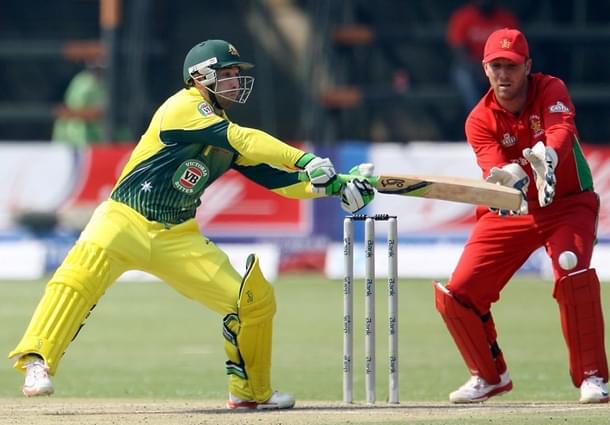
Why not just ban fast bowling and ask some blokes to roll the ball slowly down the ground to the batsman?
But I suppose then some people will carp that this is unfair to the batsman—balls rolling down the ground are difficult to hit for sixes.
Over the last day or two, several lists have appeared of cricketers who have died on the field, like this one here. These run to 11 or 12 names (including Hughes), but on closer scrutiny reveal that only five players and an umpire have actually died from injuries sustained during a match. The others died on the field from heart attacks and seizures unconnected to the game.
In fact, Pakistani cricketer Abdul Aziz was mortally injured during a domestic match in 1959 by an off-spin delivery which hit the rough and rose sharply to strike him in the chest! And Raman Lamba died after he took a pull shot on his head at close quarters, fielding at short leg without a helmet.
So, out of the five relevant deaths, only three had anything to do with fast bowling.
The number of officially recognized international Test matches and one-dayers played till today is 5,703. Lesser matches—international and domestic—played are obviously innumerable.
Of course, there have been near-death situations related to fast bowling, the two best-known involving New Zealander Ewan Chatfield and Indian captain and opening batsman Nari Contractor. In a 1975 Test match, Chatfield was clinically dead for a few seconds after being hit by a delivery from England fast bowler Peter Lever. And Contractor was almost killed in 1962 when he was struck on the head by the West Indies’ Charlie Griffith.
Now the facts. Lever did not bowl a bouncer to Chatfield. The ball hit his gloves at waist level and then slammed into his temple, felling him. And Contractor has said in many interviews that as Griffith came in to bowl, someone opened a window in the pavilion right behind Griffith’s bowling arm, and Contractor couldn’t sight the ball (there were no sight screens at that time). This was hardly Griffith’s fault.
It is also a fact that many arms and legs and jaws have been broken and noses smashed, on cricket fields by fast bowlers, from Harold Larwood in the 1932-33 ‘Bodyline’ series, to Dennis Lillee and Jeff Thomson of Australia in the 1970s, and the fearsome West Indian pacers of the 1970s and 1980s. But it’s hardly true that it’s only while batting that cricketers have been grievously injured. Players get far more regularly hurt while fielding, and sometimes with serious consequences. Raman Lamba of course is the most tragic example. But think of Saba Karim, a fine Indian cricketer whose career ended suddenly at its prime, when he was hit by a ball under his eye while keeping wickets.
What no one denies—or can dare to, without risking being branded a moron—that cricket is a batsman’s game. In case of a close call, the decision has to always go in the batsman’s favour. I think I don’t need to go into the details of how over the last decade or so, rules have been changed to aid batting sides, especially in the limited-overs formats; we can’t but admit that the bowler—especially the fast bowler—is already working as a second-class citizen. Phil Hughes’ death is a freak accident, and we need to recognize it as that, and not respond irrationally, and on the basis of immediate emotions.

The unfortunate young man whose bouncer hit Hughes is technically not even a fast bowler. He is a medium pacer.
Everyone who goes out to play cricket at a certain level knows that a leather ball coming at him at high speed is a potentially lethal projectile. That’s an integral part of the game, same as brutal shoulder charges in rugby. Or keeping control of the vehicle while negotiating a curve at nearly one-third the speed of sound in Formula 1 racing.
The bouncer is a completely legitimate weapon that a fast bowler has in his armoury, just like the yorker, which, when delivered perfectly by someone like Waqar Yunis, is referred to as the “toe-crusher”. Yes, the bouncer is most often used to intimidate rather than take a wicket, to try to jolt the batsman’s confidence a bit, but what is wrong with that? Every good batsman trains hard to tackle the bouncer and if he is scared of being hit, he should not be out there on the pitch. What use is a striker in soccer if he is terrified of the rough tackle?
There is even some outrage that bowling a bouncer is not right in the “gentlemen’s game”. Cricket is a competitive sport, and as far as genteel behaviour goes, I find the reverse sweep far more uncouth than the bouncer, which is a delivery that, in cricket history, only the most talented bowlers have been able to bowl consistently well. And sledging of batsmen using the foulest language is a much bigger insult to the spirit of the game. The spirit lives on in other ways; for example, though there is no law against it, bowling short stuff to a tail-ender has always been—and is still is—considered unsportsmanly.
If you are in the team as a batsman, you are supposed to give as good as you get, and the bowler is honour-bound to give you the best that he has.
And the fussy “gentlemen” can always go play croquet if they want.
Batsmen today are as comprehensively armoured as they can be without the weight of the protective gear slowing them down. The helmet surfaced in Test cricket only in 1979, 102 years after the first Test match was played, when Graham Yallop of Australia came out to bat wearing one (It should come as no surprise that the rival team was the West Indies). Till then, batsmen were bareheaded or had a cap on, fully aware of and accepting the physical risk involved. The best ways to tackle a bouncer developed naturally—hook it, or duck without keeping your bat up like a flagpole, or just move out of the way. This is a skill that batsmen learn as a necessary component of their repertoire.
Has there ever been a more beautiful sight in cricket than Sunil Gavaskar swaying his head and shoulders away just the required bit from a viciously rising delivery, while keeping his eyes on the ball all the time?
The truth is that no fast bowler—not Larwood, not Malcolm Marshall, not Allan Donald, not Shoaib Akhtar—has ever wanted to kill anyone. Truly fast bowlers, by the very nature of their calling, have to instill some fear in batsmen, and the bouncer is the best way to do that. When a batsman is hurt, it is usually the bowler who reaches him first and is the most concerned (as also happened in the case of Hughes).
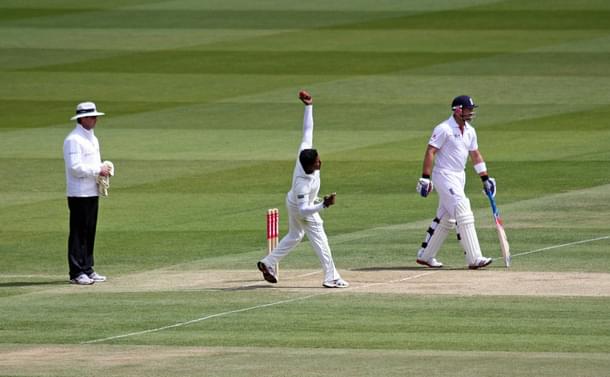
Larwood went into depression after he had hit Australia’s Bertie Oldfield on the head. Marshall vomited right there on the field after he had smashed Mike Gatting’s nose in a 1986 match (Gatting was a tough man. He had to sit out a few games, then returned with his nose plastered. Unfortunately, he had to face Marshall again when he came in to bat, and the first delivery broke a bone in his arm). Peter Lever, after hitting Chatfield, was inconsolable, and was never the same bowler again (and he hadn’t even bowled a bouncer, since Chatfield was a tail-ender, the No 11 batsman).
The truth also is that most good fast bowlers use the bouncer sparingly, because it is a notoriously difficult delivery to get just right (the same is true for yorkers). In fact, 80 per cent of the time, bouncers are wasted deliveries—they are either too high or pitch too short (and goes for a boundary or a six) or too wide for the batsman to even bother.
Phil Hughes’ death is a terrible and shocking tragedy, but it is also an event that has an extremely low probability, perhaps one in 20 million. The bowler is definitely not to blame at all, and every genuine cricket lover will surely hope that this 22-year-old cricketer can cope with what happened, be psychologically fit, and live a life without being pointed out on the streets as the man who killed Hughes. Because he did not.
He is as much a victim of fate as Hughes was.
Cricket is possibly the friendliest and most inclusive team sport on earth. This is a common sight in a Test match: a batsman makes a mess of handling a bouncer and turns and grins appreciatively at the bowler who also laughs and winks.
Don’t tamper with a fast bowler’s right to bowl a bouncer. Don’t shackle him further.
And listen to Nari Contractor, who would have thought about bouncers and the danger they pose more than almost human being alive (After his injury, though Contractor returned to first class cricket, he never made it to the India team again). Reacting to Hughes’ death, he said: “But then, this is part and parcel of the sport. I am hearing that some people are calling for change in rules and do away with bouncers. If that is done, it will take away the beauty of Test cricket.”
This is a true cricketer speaking. Respect.
Sandipan is the Editorial Director of Swarajya.





